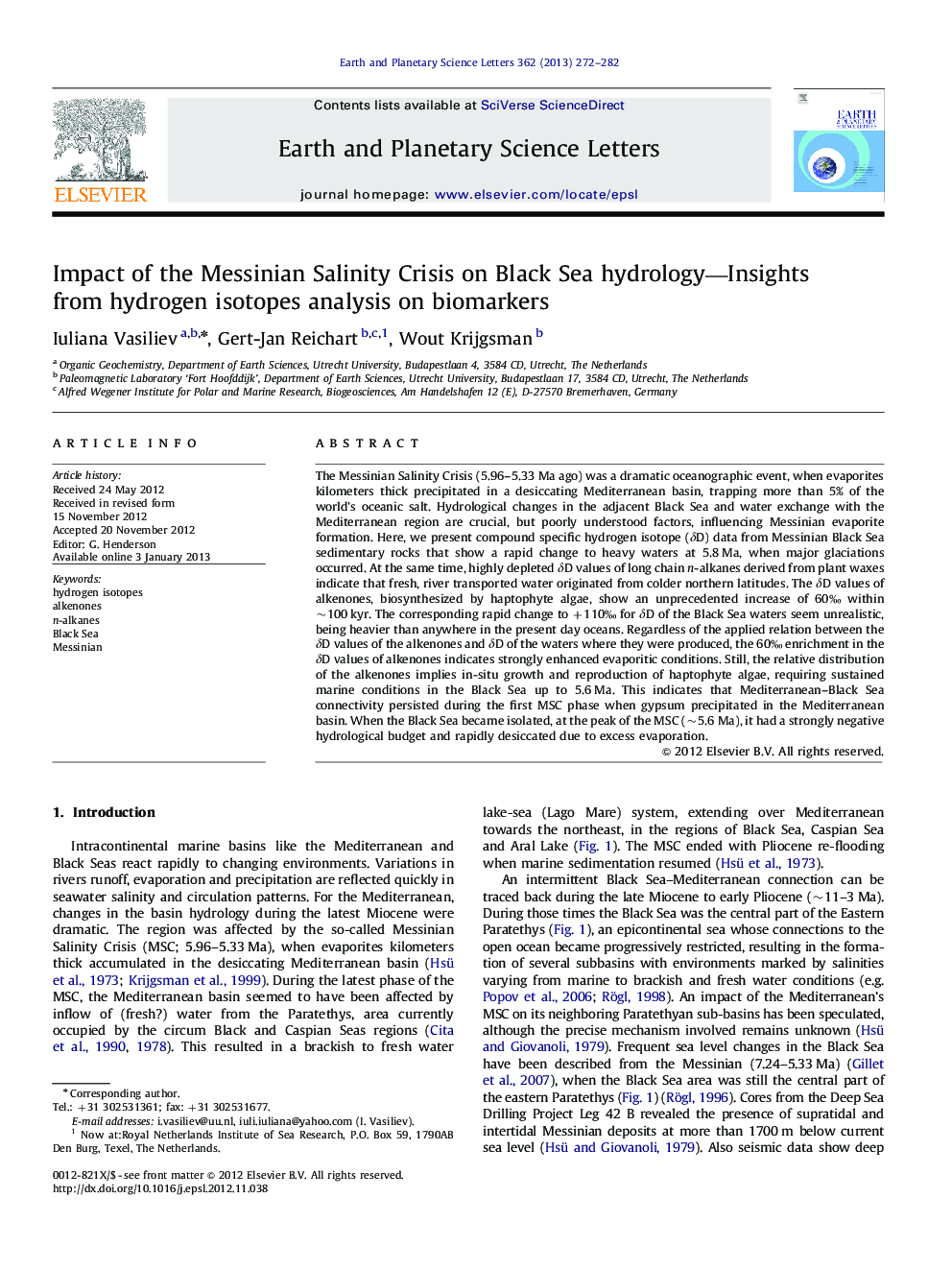| کد مقاله | کد نشریه | سال انتشار | مقاله انگلیسی | نسخه تمام متن |
|---|---|---|---|---|
| 4677265 | 1634791 | 2013 | 11 صفحه PDF | دانلود رایگان |
The Messinian Salinity Crisis (5.96–5.33 Ma ago) was a dramatic oceanographic event, when evaporites kilometers thick precipitated in a desiccating Mediterranean basin, trapping more than 5% of the world's oceanic salt. Hydrological changes in the adjacent Black Sea and water exchange with the Mediterranean region are crucial, but poorly understood factors, influencing Messinian evaporite formation. Here, we present compound specific hydrogen isotope (δD) data from Messinian Black Sea sedimentary rocks that show a rapid change to heavy waters at 5.8 Ma, when major glaciations occurred. At the same time, highly depleted δD values of long chain n-alkanes derived from plant waxes indicate that fresh, river transported water originated from colder northern latitudes. The δD values of alkenones, biosynthesized by haptophyte algae, show an unprecedented increase of 60‰ within ∼100 kyr. The corresponding rapid change to +110‰ for δD of the Black Sea waters seem unrealistic, being heavier than anywhere in the present day oceans. Regardless of the applied relation between the δD values of the alkenones and δD of the waters where they were produced, the 60‰ enrichment in the δD values of alkenones indicates strongly enhanced evaporitic conditions. Still, the relative distribution of the alkenones implies in-situ growth and reproduction of haptophyte algae, requiring sustained marine conditions in the Black Sea up to 5.6 Ma. This indicates that Mediterranean–Black Sea connectivity persisted during the first MSC phase when gypsum precipitated in the Mediterranean basin. When the Black Sea became isolated, at the peak of the MSC (∼5.6 Ma), it had a strongly negative hydrological budget and rapidly desiccated due to excess evaporation.
► δD from Messinian Black Sea show rapid change to evaporitic conditions at 5.8 Ma.
► 60‰ enrichment in δD values of alkenones within ∼100 kyr.
► Depleted δD of long chain n-alkanes indicate river water from colder latitudes.
► Black Sea had strong negative hydrological budget at the peak of the MSC (∼5.6 Ma).
Journal: Earth and Planetary Science Letters - Volume 362, 15 January 2013, Pages 272–282
